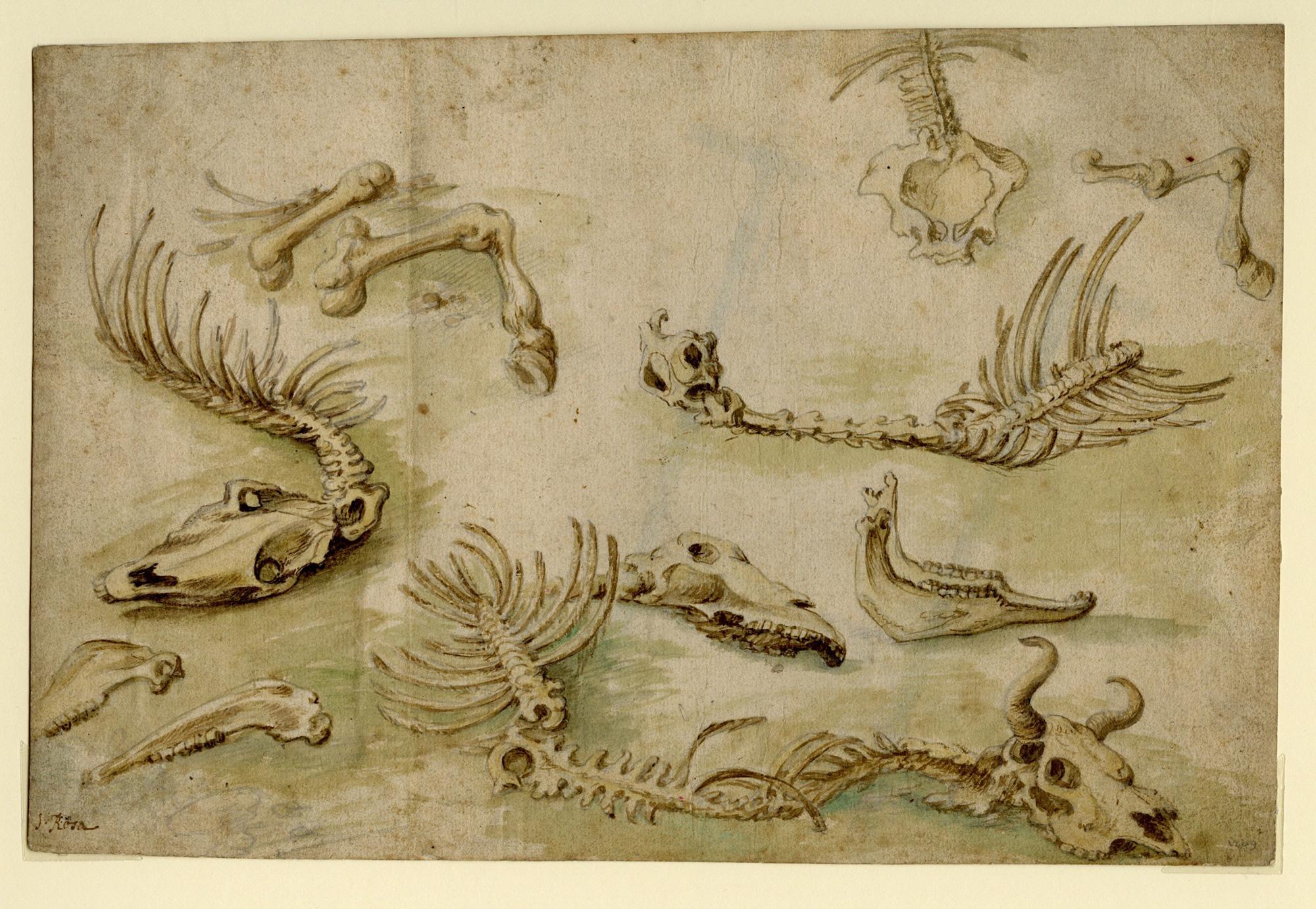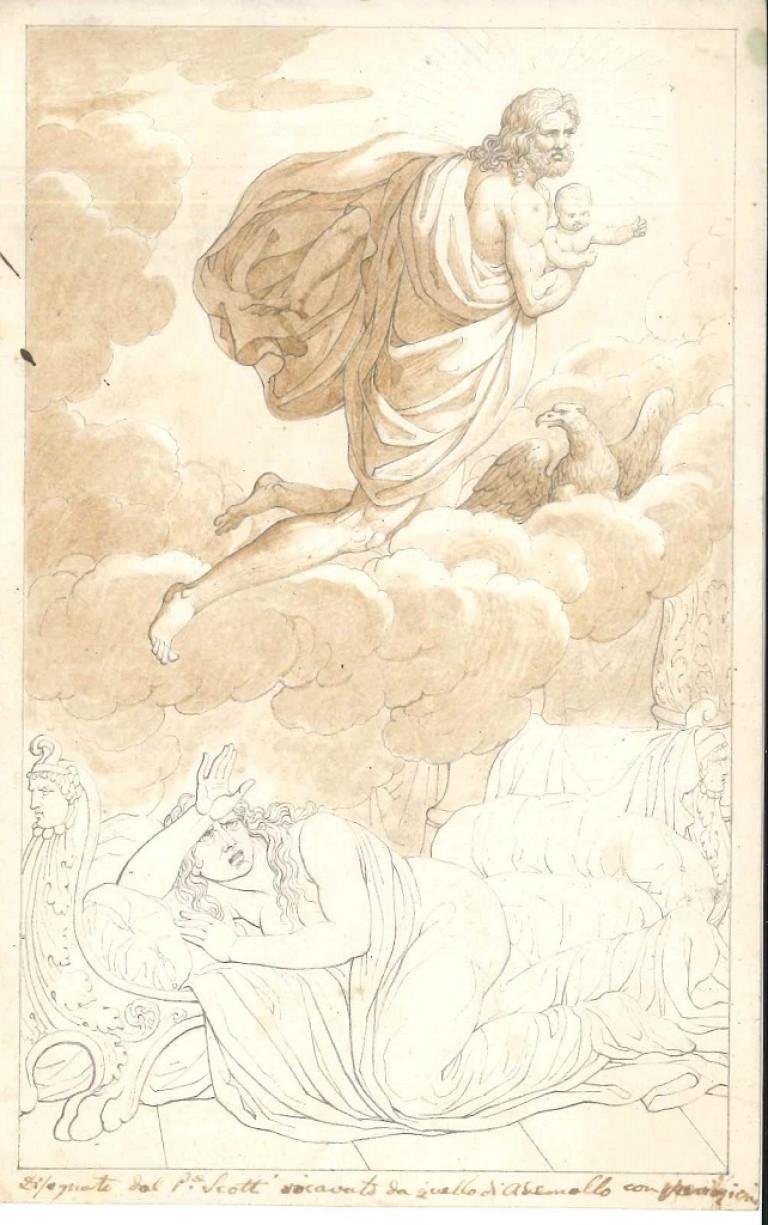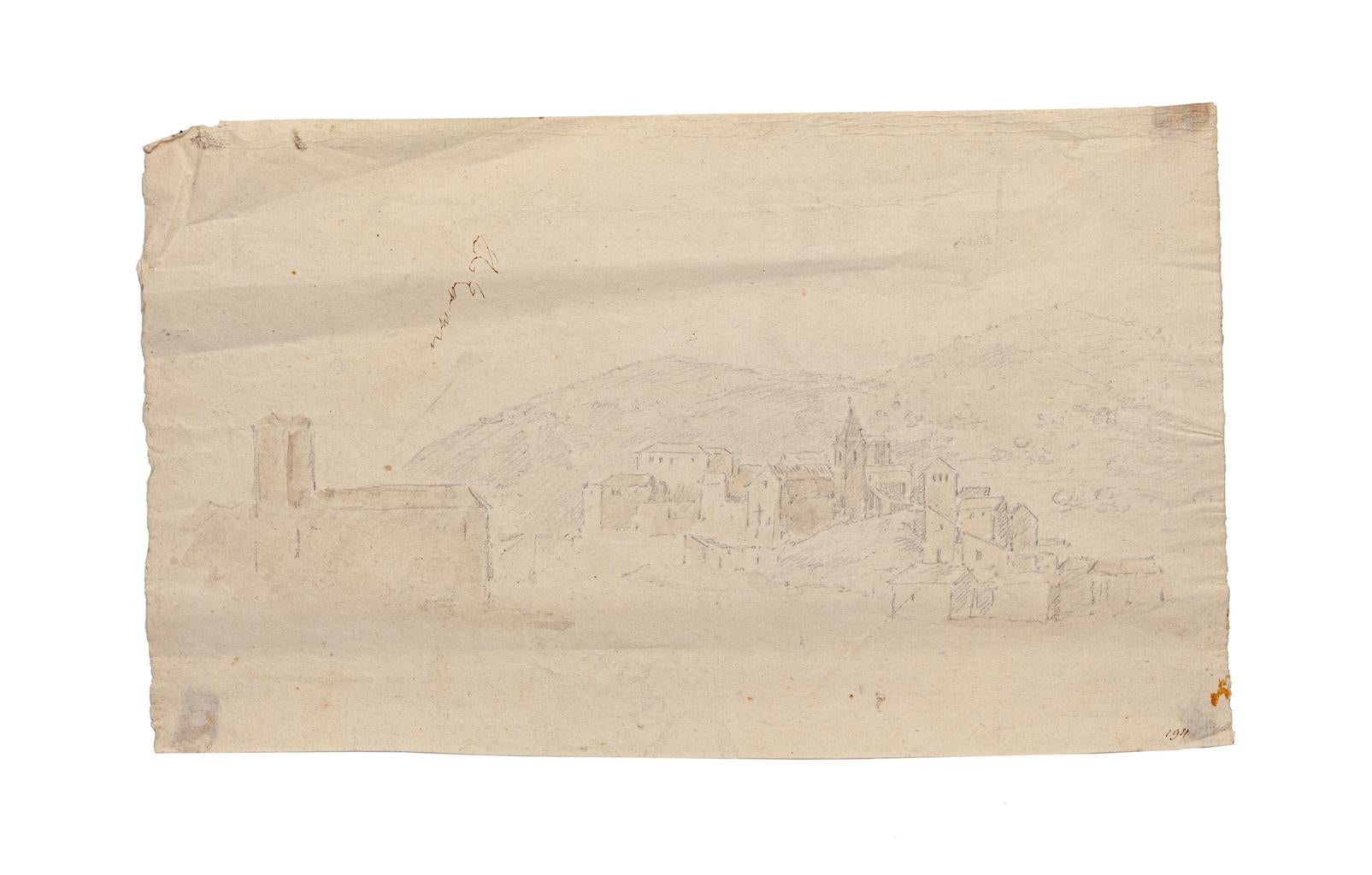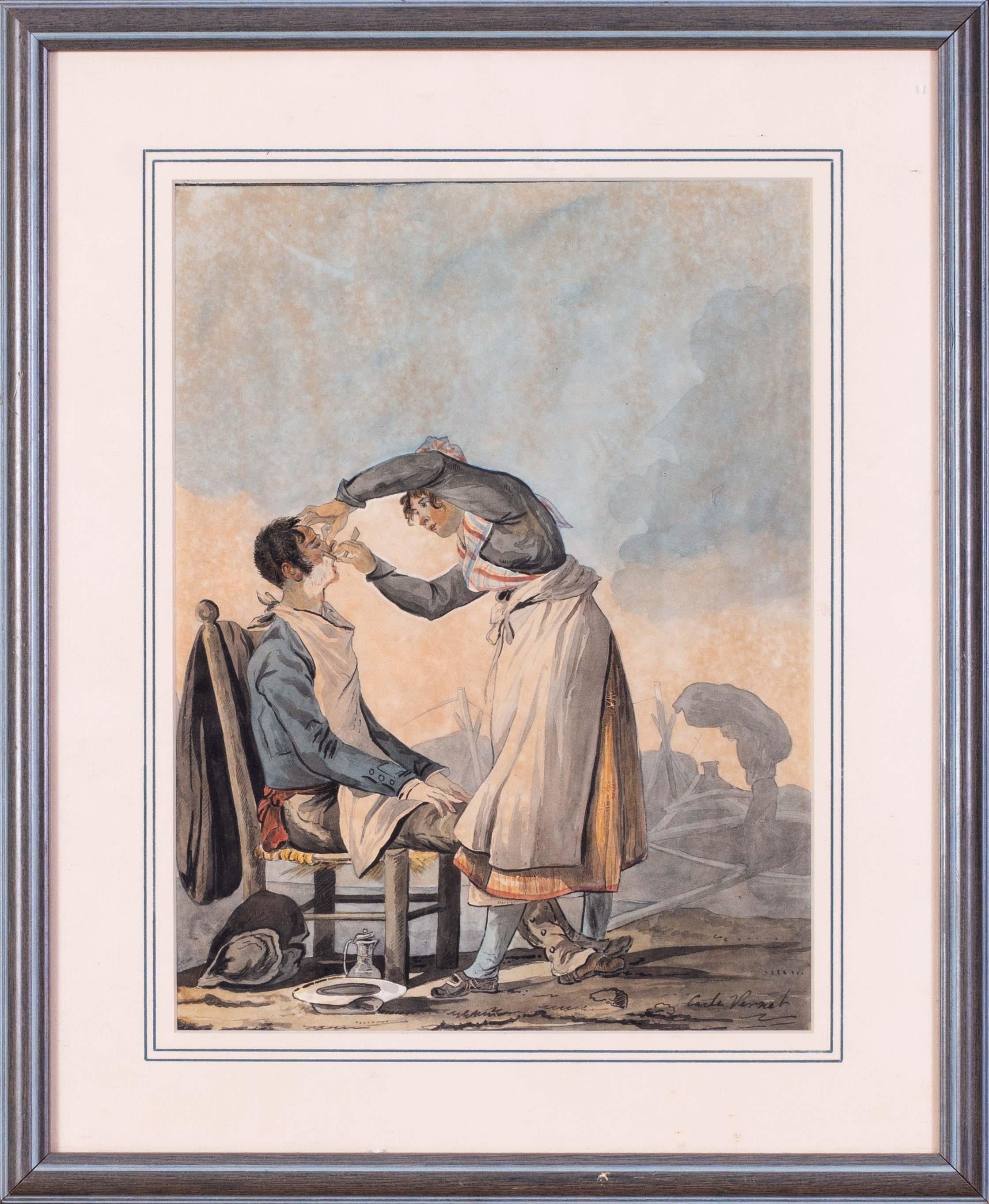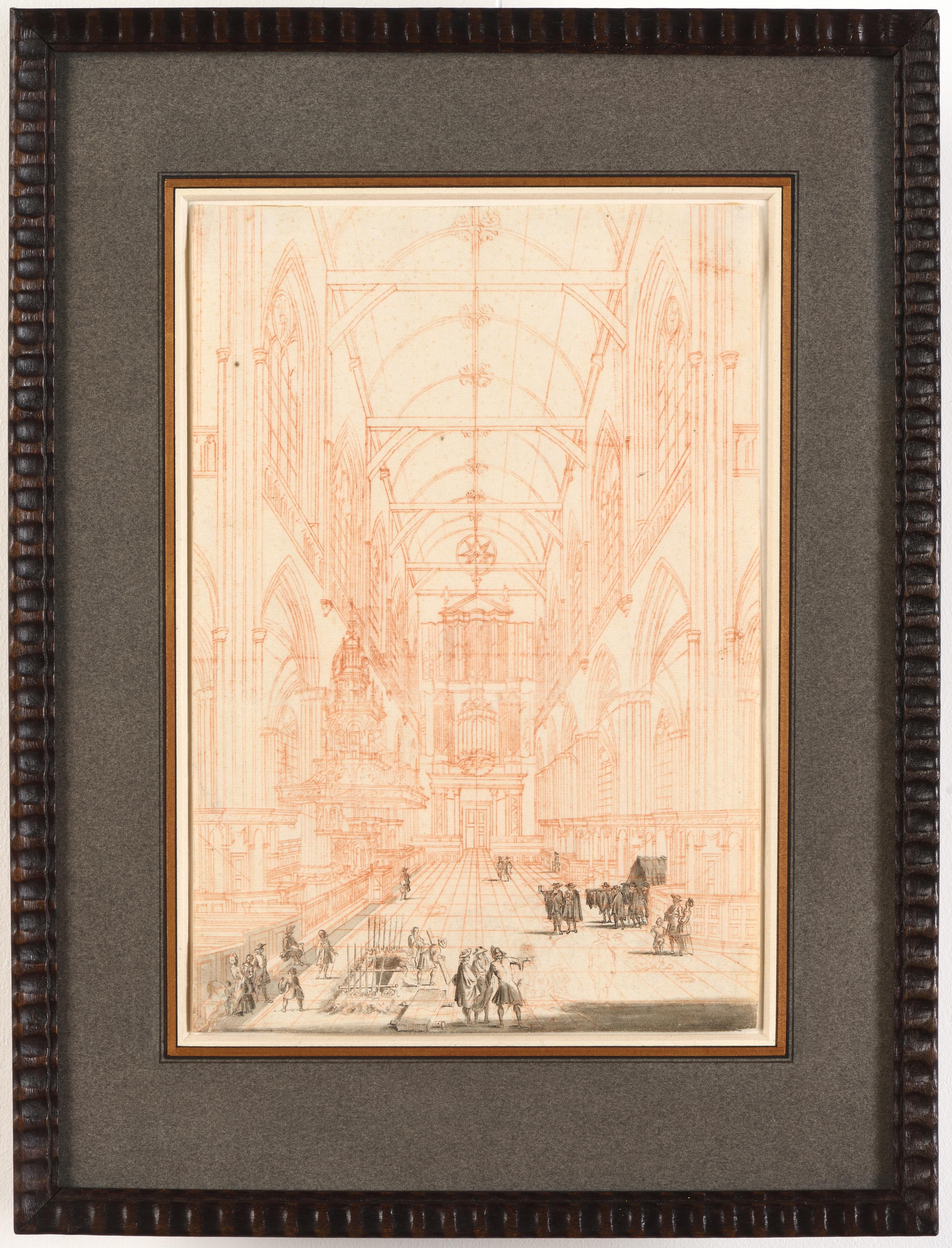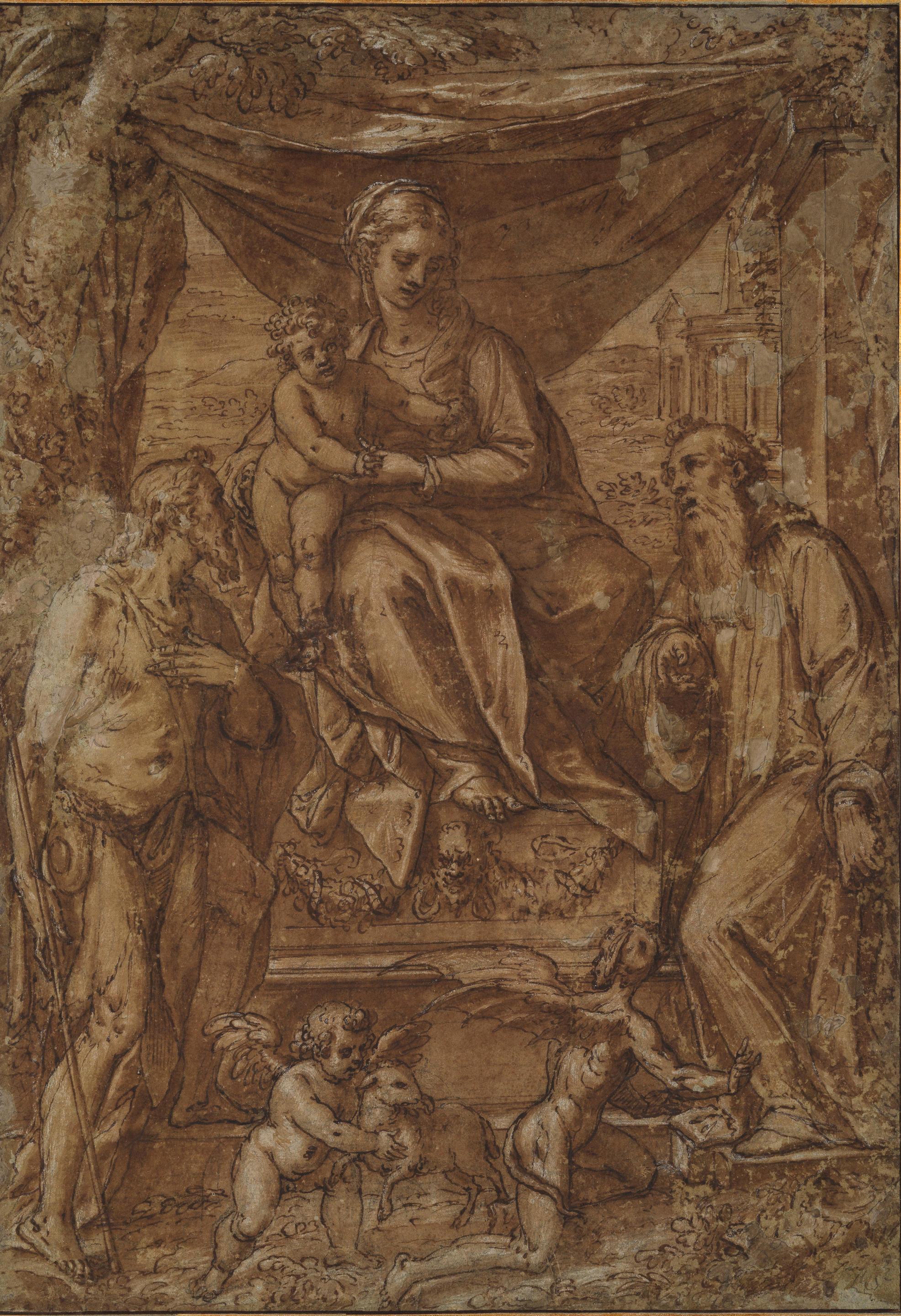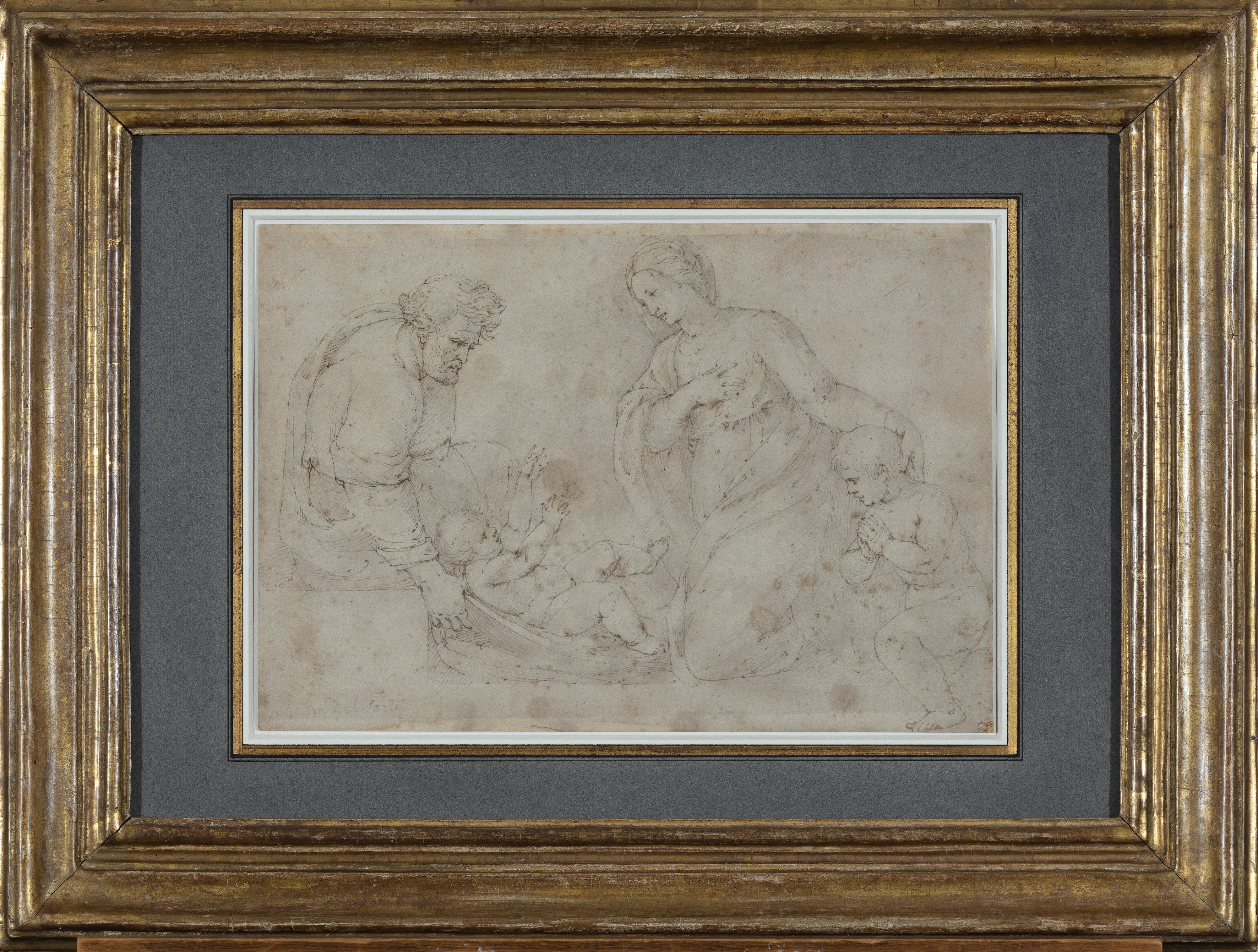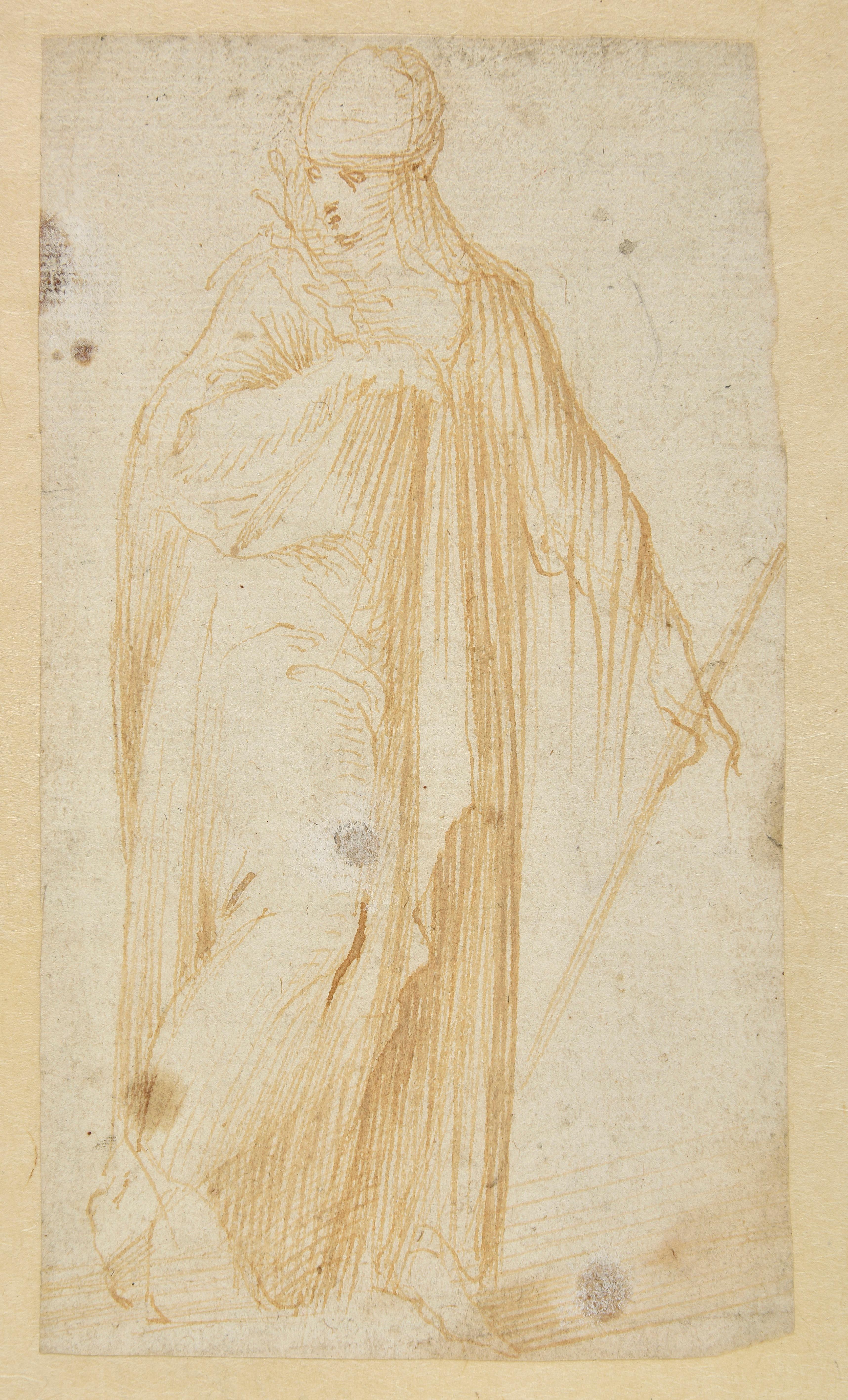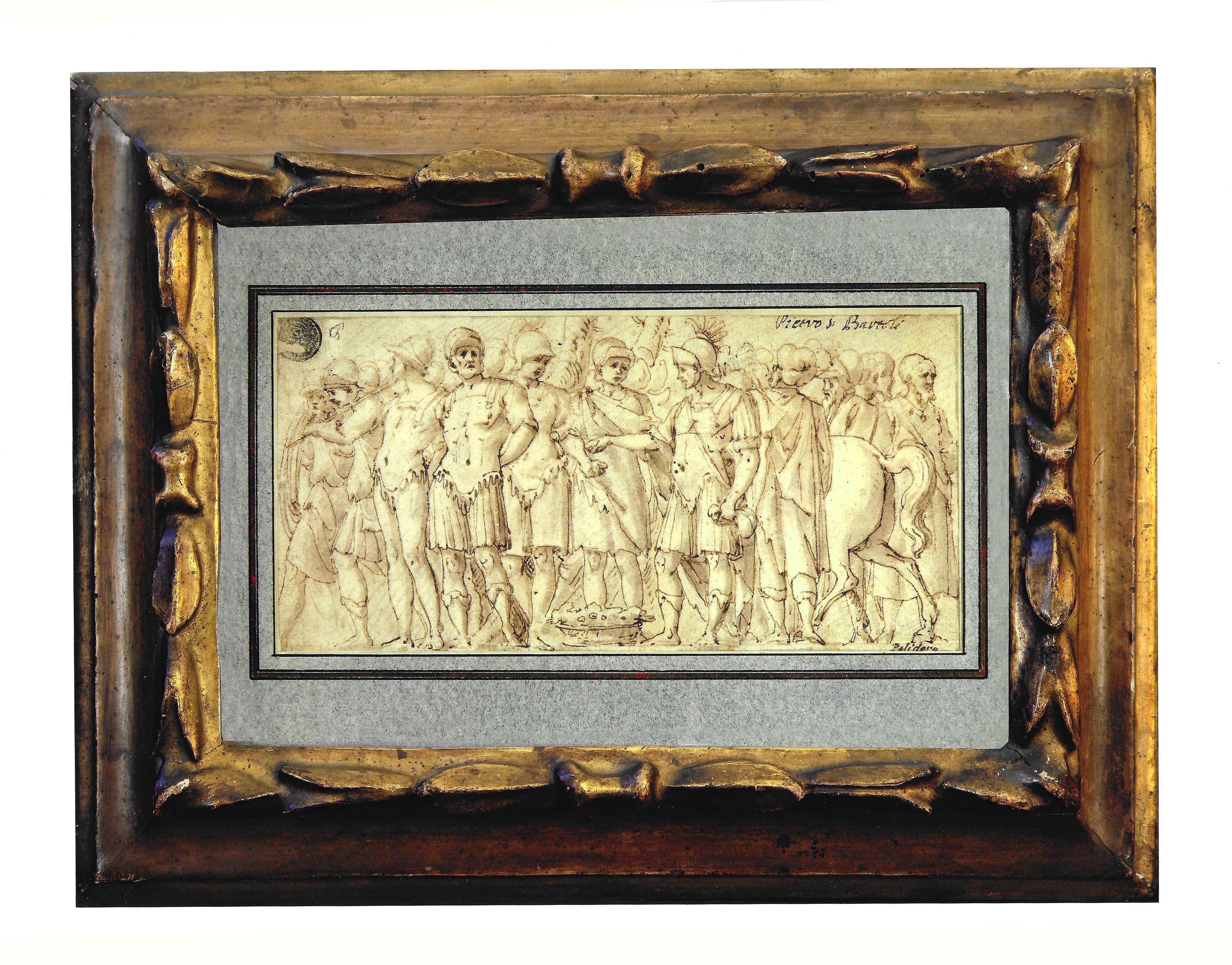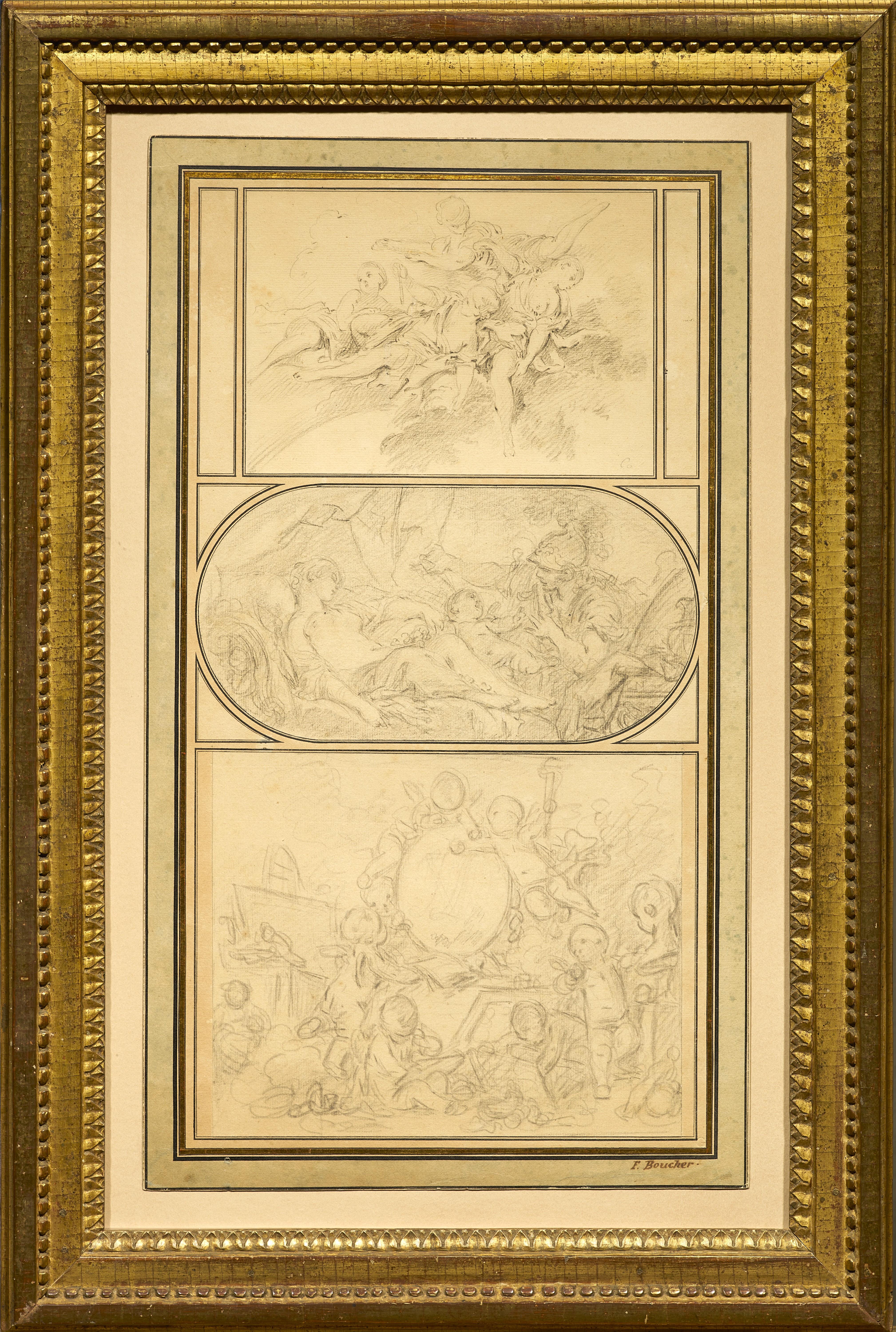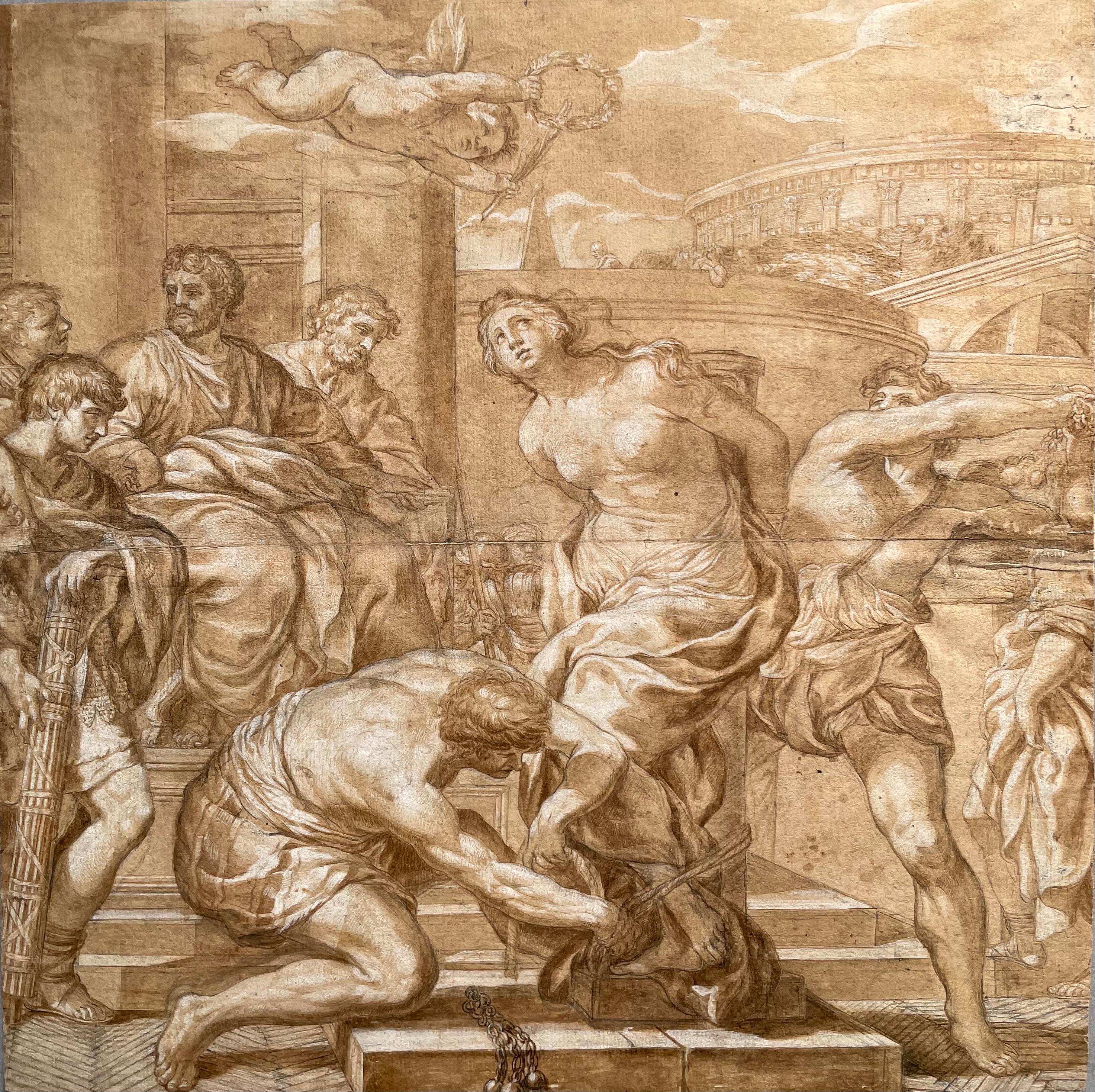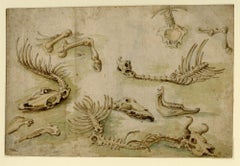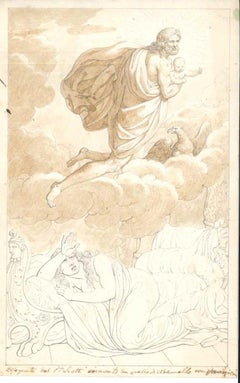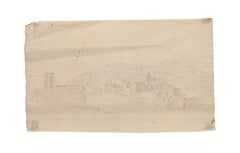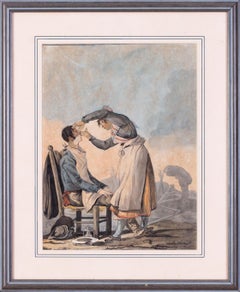
17thC Italian Old Master Drawing by Giulio Benso: Miraculous Draught of Fish
View Similar Items
1 of 6
Giulio Benso17thC Italian Old Master Drawing by Giulio Benso: Miraculous Draught of Fishcirca 1650
circa 1650
$2,621.68List Price
About the Item
- Creator:Giulio Benso (1592 - 1668, Italian)
- Creation Year:circa 1650
- Dimensions:Height: 5.32 in (13.5 cm)Width: 3.98 in (10.1 cm)
- Medium:
- Movement & Style:
- Period:Mid-17th Century
- Condition:
- Gallery Location:Gouda, NL
- Reference Number:1stDibs: LU116014261932
Authenticity Guarantee
In the unlikely event there’s an issue with an item’s authenticity, contact us within 1 year for a full refund. DetailsMoney-Back Guarantee
If your item is not as described, is damaged in transit, or does not arrive, contact us within 7 days for a full refund. Details24-Hour Cancellation
You have a 24-hour grace period in which to reconsider your purchase, with no questions asked.Vetted Professional Sellers
Our world-class sellers must adhere to strict standards for service and quality, maintaining the integrity of our listings.Price-Match Guarantee
If you find that a seller listed the same item for a lower price elsewhere, we’ll match it.Trusted Global Delivery
Our best-in-class carrier network provides specialized shipping options worldwide, including custom delivery.You May Also Like
Study of horse and ox bones
By Salvator Rosa
Located in Middletown, NY
Graphite, ink wash and watercolor on handmade laid paper with a large, indistinguishable ovoid watermark with a bunch of grapes, 8 7/16 x 12 5/8 inches (225 x 320 mm), signed in brown ink in the lower left. With the Henry Scipio Reitlinger oval stamp in brown ink on the verso (Lugt 2274a).
The condition of the image and paper is consistent with age, there is minor toning on the recto and some attenuation of the green pigment. The drawing is laid down to an 18th century laid paper support and has a small pencil notation in the lower right corner (modern), and scattered notations in pencil on the verso of the support (also modern, perhaps auction/accession notes). On the paper support is an ink drawing in red and black of what appears to be the floor plan for the wing of a large building. The drawing is top-up, adhered facing the verso of the drawing. The architectural drawing on the support is visible through to the recto of the composition when the sheets are viewed through raking light. There is a small area of stipple point spotting in brown ink on the verso of the support. Examination under black light shows no indication of repairs or additions, expert or otherwise.
Provenance:
Henry Scipio Reitlinger was born in either 1882 or 1885, attended Kings College...
Category
Mid-17th Century Old Masters Figurative Drawings and Watercolors
Materials
Ink, Handmade Paper, Laid Paper, Graphite
Mythological Subject - Charcoal and Ink Drawing
Located in Roma, IT
Mythological subject is a precious original drawing (black chalk, brush, and watercolor ink on ivory colored paper). Unsigned.
Inscription: "Disegnato dal P. e Scotti ricavato da que...
Category
19th Century Old Masters Figurative Drawings and Watercolors
Materials
Ink, Charcoal
Landscape - Pencil and Watercolor by Jan Pieter Verdussen - 1750
By Jan Pieter Verdussen
Located in Roma, IT
Landscape is a beautiful drawing in watercolor and pencil on ivory-colored paper realized by Jan Peter Verdussen.
In good condition; only a smallspots at the edges of the drawing an...
Category
1750s Old Masters Figurative Drawings and Watercolors
Materials
Paper, Ink, Watercolor
Pair of 18th Century watercolour drawings by Old Master Carle Vernet
By Carle Vernet (Antoine Charles Horace Vernet)
Located in Petworth, West Sussex
Carle Vernet (French, 1758 – 1836)
‘La Marchande de Coco’; and ‘La Tour de Babbe d’un Charbonnier’
Ink, watercolour on paper
Both signed C Vernet and Carle Vernet (lower left and lower right respectively)
12.1/4 x 9 in. (31 x 22.8 cm.) A pair
Vernet was born in Bordeaux. At the age of five, he showed an extraordinary passion for drawing horses, but went through the regular academical course as a pupil of his father and of Nicolas-Bernard Lépicié. Strangely, after winning the grand prix (1782), he seemed to lose interest in the profession, and his father had to recall him back from Rome to France to prevent him from entering a monastery.
In his Triumph of Aemilius Paulus, he broke with tradition and drew the horse with the forms he had learnt from nature in stables and riding-schools. His hunting-pieces, races, landscapes, and work as a lithographer were also very popular.
Carle's sister was executed by the guillotine during the Revolution. After this, he gave up art.
When he again began to produce under the French Directory (1795–1799), his style had changed radically. He started drawing in minute detail battles and campaigns to glorify Napoleon. His drawings of Napoleon...
Category
18th Century Old Masters Figurative Drawings and Watercolors
Materials
Paper, Ink, Watercolor
Interior of the Nieuwe Kerk, Amsterdam
Located in Paris, Île-de-France
Jan Goeree (Middelburg 1670 – Amsterdam 1731)
Interior of the Nieuwe Kerk, Amsterdam (c. 1724)
Red chalk for the architecture, pen and black ink, grey wash on paper
Composition reversed in preparation for engraving
25 × 17.5 cm
Watermark: Hunting horn, Churchill 318 (dated 1724)
Unsigned
Provenance
Private collection, France
Context & Attribution
Trained in the studio of Gérard de Lairesse, Jan Goeree was among the finest Dutch engravers of the early eighteenth century, celebrated for his architectural views of Amsterdam. This drawing is a preparatory study for an engraving of the same subject now preserved in a major public collection. The final print—slightly larger—closely follows the reversed composition of this sheet.
Subject
In the center of the Gothic nave, five bearers carry a catafalque toward a freshly dug grave—a tribute to the naval heroes often buried in the Nieuwe Kerk. This funerary motif, familiar from Dutch painting (e.g. Emanuel de Witte, 1657), evokes the vanitas theme and the transience of earthly life.
Technical Analysis
Goeree’s use of red chalk for the architecture and ink for the figures reveals his working method: the chalk lines could be used to produce a counterproof restoring the correct orientation of the architecture, while the inked figures remained adjustable before the design was transferred to the copper plate.
Place within the Oeuvre
Drawings of church...
Category
Early 18th Century Old Masters Interior Drawings and Watercolors
Materials
Ink, Chalk
Virgin and Child with Saint John the Baptist and Saint Jerome
Located in Paris, Île-de-France
Felice Pinariccio, known as Le Lasagna (active in Bologna during the 1560s-1570s)
Virgin and Child with Saint John the Baptist and Saint Jerome
Pen and brown ink, brown wash heighte...
Category
16th Century Old Masters Figurative Drawings and Watercolors
Materials
Ink
Recently Viewed
View AllMore Ways To Browse
Old Abbey
Oval Old Masters Paintings
1500s Painting
Annibale Carracci
Assumption Of The Virgin
Giovanni Ferraris
Vidal Lion
Ferrari Pen
Large Figurative Paintings
Original Line Art
Whimsical Art
Green Abstract Art Paint
19th Century Signed Paintings
Black Background Paintings
Etching Plate
Paintings With Hearts
Tree Of Life Art
Painting 1995
